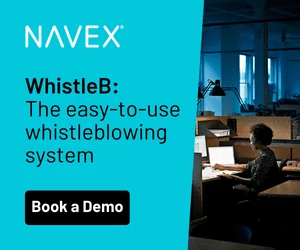It’s your job to walk into a conference room full of Board directors and, in a short presentation, convey a holistic, accurate picture of all the information technology risks across your entire organization. Now, imagine you were expected to prepare for this make-it-or-break-it meeting, which may involve delivering negative and expensive news to executives, using only email and spreadsheets. Ready? Go!
Communicating risk posture and assessments to the highest levels of an organization is a demanding and increasingly pivotal responsibility in businesses that rely on information technology—in other words, almost every business. In a world where business and infrastructure run on digital technology that is vulnerable to highly skilled hackers, protecting those technology assets is quickly becoming Job #1.
In fact, a recent survey showed that, of IT professionals who responded that security was their main focus, 34 percent spend most of their time on IT risk management and 25 percent primarily spend time on regulatory compliance. IDC projects that by 2018, the financial services sector will spend more than 18 percent ($96 billion) of their total IT dollars on risk management technology and services.
The risk management and governance work performed by CIOs, CROs, CISOs and their teams is central to the security of enterprise assets, data, supply chains, services and customers. It’s not just about checking boxes on compliance and audit preparation; when governance, risk management and compliance (GRC) programs are properly implemented, they strengthen and protect every facet of the enterprise. Managing security, IT and corporate policies becomes more integrated and efficient, closing gaps created by silos of data, systems and functions.
Visibility is a huge issue in most organizations. It’s a buzzword, but think about what it really means and how hard it is to “see” everything in a complex, technology-powered organization. Multiply the difficulty if you are a large, multinational corporation that has a sizable technology footprint. As a C-level executive, the Board expects you to be the eyes and ears. You need a watchtower, not a spreadsheet. If you don’t have an inclusive inventory of technology assets—data, hardware, software and devices—then you only have a partial risk picture. Mature GRC programs can combine data from across the technology landscape to create a true asset management database and then integrate vulnerability scans, configuration and SIEM data, threat intelligence feeds and incident reports in order to map relationships between assets, risks, policies and compliance requirements. This provides a holistic view of risk.
Indeed, one of the primary benefits of comprehensive GRC programs is the ability to aggregate data on assets and their associated risks from across the enterprise and check it against policy benchmarks, threat intelligence sources and compliance databases. In turn, centralizing the data makes reporting much simpler, and reports can even be customized based on the different needs, roles, levels of knowledge and responsibilities of stakeholders. Automation (e.g., workflow, monitoring and remediation) and advanced analytics are essential GRC capabilities that facilitate more complete and accurate risk assessments.
Once you can connect, analyze and report on these relationships in a centralized framework, you can begin the real work of risk management: aligning risks to business value so that you can plan and prioritize compliance and remediation workflows effectively. This is how you get to the context, evidence and business value justifications the Board requires when addressing risk. An enterprise can only move toward risk management maturity and optimization by taking strategic approaches rather than merely tactical ones. Many IT departments do not know enough about how non-IT operations create value—or even what specific type of threat or incident would cause the most costly damage. GRC platforms map vulnerabilities to assets, risks, compliance activities and business value so that it becomes possible to track key risk indicators as carefully and contextually as key performance indicators. Each company has a unique risk profile; those with the most accurate self-awareness know which risks they can accept and which lines they cannot cross.
It’s a lot easier to convey risk assessments to executives and Boards if you are all speaking the same language. With a holistic risk profile correlated to business metrics, processes and goals, CIOs can select which risks need to be presented to the Board—the ones with the highest probability and impact. They can also calculate what it would cost should the risk become reality. How would the company be affected and for how long? How much would it cost for remediation? How much revenue and reputation would be lost? Speaking in dollars and cents goes a long way to bridging the gap between IT and the Board. Getting everyone on the same page through regular reporting and unified risk assessments also fosters the collaboration and top-down security and compliance culture that are the hallmarks of mature enterprises.
Achieving risk management maturity is essential to building resilient organizations that can withstand the harsh blows inflicted by cyber crime and espionage, ideologues and geopolitics, natural disasters and rapidly shifting technology and regulatory landscapes. Aligning technology assets with risk management and compliance efforts in a way that is informed by and responsive to business strategies and priorities protects investments and stimulates growth. GRC platforms provide the tools for getting it all done and documented with greater efficiency—automating and optimizing workflows, decreasing redundancy in both tasks and technology acquisition, integrating internal and external data, mapping compliance and policy processes and creating and distributing assessments and reports.
Now, imagine walking into a conference room full of executives armed with everything you need to paint a detailed and accurate picture of your company’s risk posture, the financial and business costs associated with the high-priority risks and a detailed plan for addressing them. You have efficiently created reports in hand that contain only the most pertinent information, and you know you can find the answers to any questions they throw your way. You’re fully prepared for a typical Board conversation about shareholder assurance, customer concerns and forward-looking strategies. Ready? Go!



 Sam Abadir is Vice President of Industry Solutions at
Sam Abadir is Vice President of Industry Solutions at 








